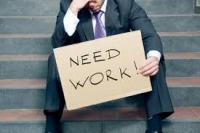Fall in Employment
Friday 31 July, 2015 Written by Full Fact
There was a fall in employment and a rise in unemployment, when comparing March to May 2015 with the 3 months to February 2015.
Comparing March to May 2015 with the 3 months to February 2015, the number of people in employment fell by 67,000 (to reach 30.98 million), the number of unemployed people increased by 15,000 (to reach 1.85 million) and the number of people not in the labour force (economically inactive) aged from 16 to 64 increased by 30,000 (to reach 9.02 million).
The number of people who are unemployed isn’t the same as the number of people claiming Jobseeker’s Allowance according to Full Fact. The unemployment measure looks at people who have looked for work in the past 4 weeks, and are ready to start work in the next 2 weeks. People who are still out of work, but are starting a job in the next two weeks are also unemployed.
If you match one of these descriptions, you’re counted as unemployed no matter what benefits you do or don’t claim.
The claimant count looks at the number of people claiming Jobseeker’s Allowance, and people out of work claiming Universal Credit. Not all people claiming this benefit are unemployed—for example, some low paid part-time workers can claim it, and some out of work Universal Credit claimants aren’t required to look for work. And not all unemployed people can claim Jobseeker’s Allowance.
People who claim these benefits show up in the claimant count if they don’t receive payment, so a person who has their benefits sanctioned will still be in the count. If they don’t sign on while sanctioned, their claim will be closed and they’ll drop out of the count.
There aren’t reported confidence intervals for the claimant count because this measure is based on the data the government collects when it makes payments.
Why does the proportion of people aged from 16 to 64 who were employed (73.3%) plus the inactive (22.2%) not come to 100%? What are the missing 4.5% doing?
The employment and inactivity rates don’t sum to 100% because some people are unemployed.
Economically active means that you are either employed, or unemployed. Economically inactive means that you aren’t in either of those categories. This would include retirees or stay-at-home parents.
The unemployment rate is the proportion of economically active people who are unemployed.
More generally, in the headline indicators, the employment, unemployment and inactivity rates don’t sum to 100 because they’re percentages of different groups. The employment and inactivity rates are for all people aged between 16 and 64, but the unemployment rate is for economically active people aged 16+.
Did the fall in long term unemployment happen because people found work, or because people were sanctioned?
Long term unemployment fell from 623,000 to about 570,000 in the latest figures. That’s people who were unemployed for over a year—the international definition used by the Organisation for Economic Cooperation and Development.
Leave a comment
Make sure you enter all the required information, indicated by an asterisk (*). HTML code is not allowed.
Join
FREE
Here










